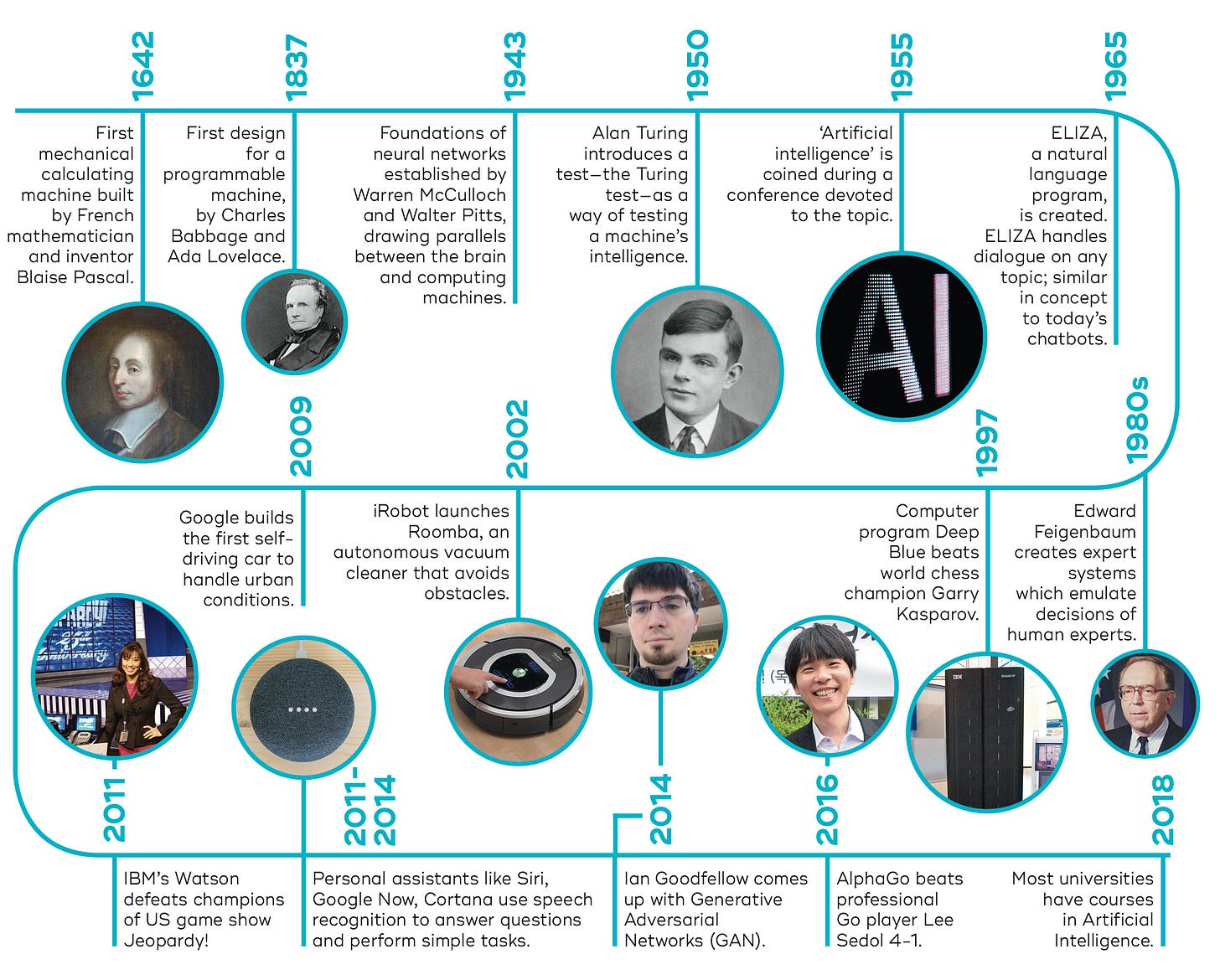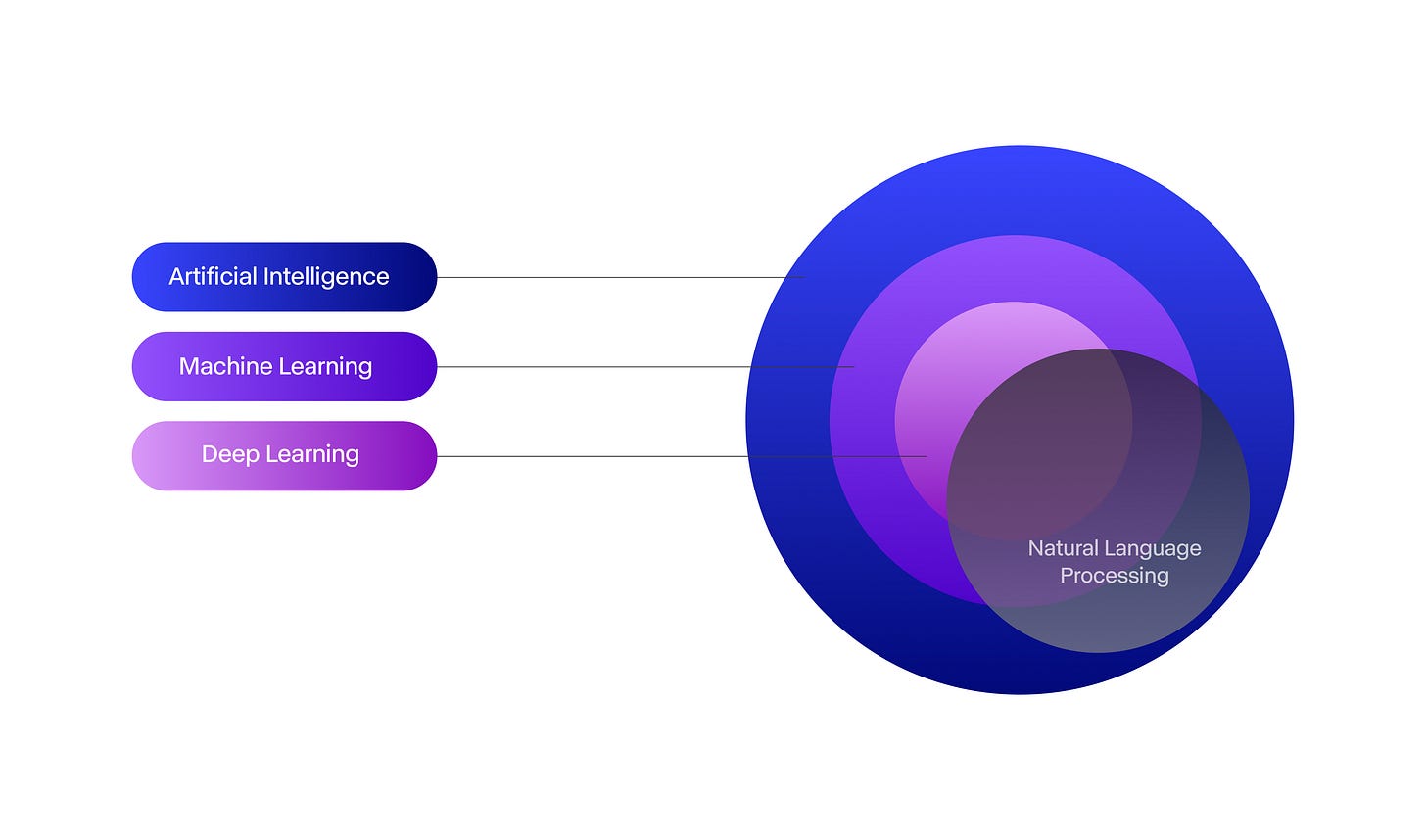🦾 AI Variations in robotics
When it comes to choosing the right AI technology for robotics, we must match the tool to the task.
Artificial intelligence, which emerged in the 1940s, refers to machines simulating human intelligence, enabling them to think and learn. Depending on their design and training data, these systems can be adapted to perform specific tasks, such as problem-solving, speech recognition, decision-making, and language translation.
Key subfields include:
Machine Learning - algorithms that enable systems to learn and improve from experience without explicit programming;
Natural Language Processing - the ability of a machine to understand and respond to human language;
Computer Vision - the capability of machines to interpret and make decisions based on visual inputs.
A brief history of AI in robotics
AI integration into robotics has steadily advanced since the 1960s, starting with Unimate, the first industrial robot, and Shakey in 1966, which used AI for navigation. Progress continued through the end of the 20th century, and accelerated in the 2000s and 2010s. However, significant breakthroughs have emerged in recent years. In 2021, Tesla unveiled plans for the Tesla Bot, and in 2022, OpenAI's GPT-3 showcased AI's capabilities in language, coding, and robotics.
Types of AI
AI in robotics can be categorized into several types. The simplest systems respond to specific inputs with predefined outputs, lacking memory or learning ability. While predictable, they require extensive programming and struggle in unexpected situations. AI with limited memory, like in autonomous vehicles, can use past experiences to improve decision-making but requires significant data and processing power. More advanced and theoretical is the Theory of Mind AI aiming to simulate human emotions and thoughts, demanding complex modeling, interdisciplinary work, and substantial computational resources.
Matching the AI to the technology
Choosing the right AI for robotics depends on the task and environment. Simple, repetitive jobs suit rule-based AI, while complex tasks require deep learning or reinforcement learning. For example, outdoor robots need strong computer vision, while indoor robots focus on precision and safety.
Machine Learning (ML) improves tasks like maintenance and navigation, Deep Learning (DL) excels in image recognition, and Reinforcement Learning (RL) optimizes robots through trial and error. Natural Language Processing (NLP) enables robots to understand human language for applications like voice assistants.
Therefore, task-specific requirements play a crucial role; certain functions are inherently better suited for specific AI types, such as deep learning for image recognition. Performance metrics like accuracy, speed, adaptability, and resource availability help evaluate AI suitability. For example, deep learning needs extensive data, while reinforcement learning may not.
On the other hand, integration and scalability are key for AI implementation. The AI must work smoothly with existing systems and be easily scalable for broader applications.
But each technology has its limitations. Despite its advantages, AI integration in robotics faces a few challenges, like a heavy reliance on large datasets for training AI models, the high demand for computational power and resources, ethical and social concerns, issues of bias and fairness arising from biased data, and more.
AI at inbolt
At inbolt, in our pursuit of continuous product improvement, we leverage AI technologies such as deep learning for image recognition and reinforcement learning to optimize robotic movements, all tailored to meet our clients' specific needs.
Our choice of AI is driven by the need for robust image analysis, predictive capabilities, and the ability to optimize processes autonomously.
We believe that future innovations in AI algorithms, integration, and computational power will enhance robotics, making systems more autonomous, adaptable, and secure.
More on the subject:
Thinking Machines: Why Robots Rely on Artificial Intelligence - Artificial intelligence (AI) has been around since 1956, when it was coined by John McCarthy during a conference. Since then, AI has had a slow but steady coming to, with 2023 quickly becoming the year of AI.Today, we are taking a step back to explain what AI is, and why it is relevant to automation in the manufacturing industry.
All you need to know about AI and Robotics - Reports indicate that the global AI manufacturing market is projected to reach a staggering $9.89 billion by 2027, highlighting the rapid growth and adoption of AI solutions. Let’s take a walk.




